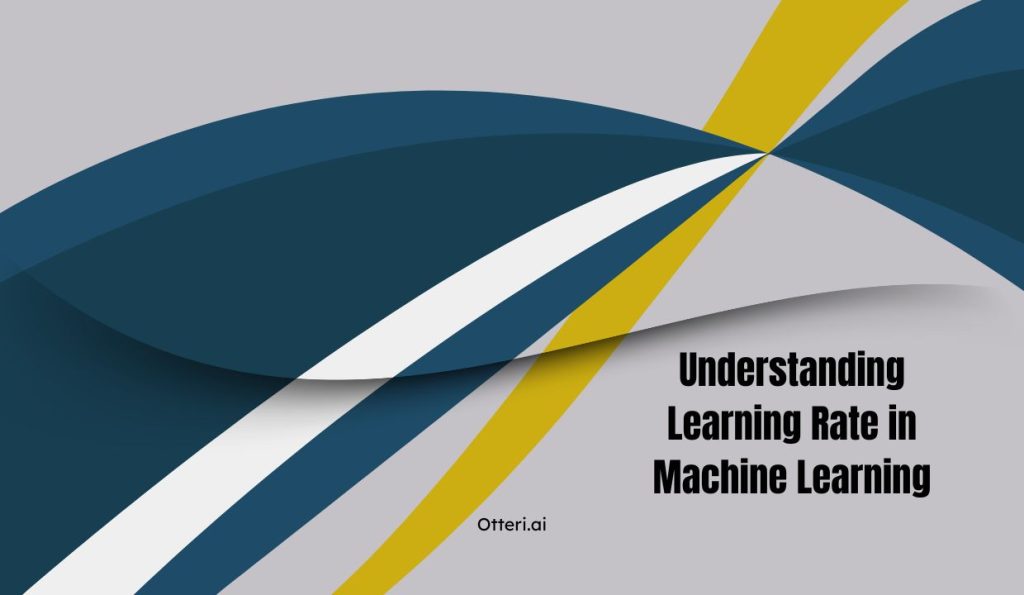
Learn what learning rate means in machine learning, why it matters, how to choose the right value, and the common challenges.
When training machine learning models, the learning rate plays a crucial role in determining how effectively the model learns from data. Yet, it remains one of the most misunderstood hyperparameters, especially for beginners.
In this guide, we’ll walk you through what learning rate is in machine learning, why it matters, how to select the right value, and the common challenges involved — explained simply and clearly.
Whether you’re building basic regression models or training deep neural networks, understanding the learning rate is critical for machine learning optimization and ensuring your models converge properly.
What is the Learning Rate in Machine Learning?
In simple terms, the learning rate is a hyperparameter that controls how much we adjust a model’s weights concerning the loss (error) after each update. It’s a small positive value, usually between 0.0001 and 1.
When a machine learning model learns, it uses an optimization algorithm, like gradient descent, to minimize the error by updating the model’s weights. The learning rate dictates how big a step we take toward reducing that loss.
Here’s how it works:
Low Learning Rate: Small, incremental updates. Learning is slow but stable.
High Learning Rate: Larger updates. Learning is faster but risks overshooting the minimum or even diverging entirely.
This highlights the importance of learning rate — it’s essential for helping your model learn efficiently without getting stuck or behaving unpredictably.
Why is Learning Rate Important?
The learning rate in machine learning influences three critical aspects:
Speed of Learning
A well-chosen learning rate accelerates the training process by reaching the optimal solution more quickly.
Model Accuracy
The learning rate determines whether the model successfully converges to a minimum loss or ends up oscillating around it without stabilizing.
Training Stability
An improper learning rate can lead to issues like exploding gradients, vanishing gradients, or total failure to converge.
In short, selecting the right learning rate helps you balance training speed, accuracy, and model reliability.
How to Choose the Right Learning Rate?
Choosing the right learning rate can sometimes feel like trial and error, but certain strategies can make the process easier:
Learning Rate Finder
Modern deep learning libraries like PyTorch and Keras offer tools to plot loss against different learning rates. These graphs help you visualize the best learning rate range for your specific model.
Learning Rate Schedulers
Rather than sticking to a single learning rate throughout training, you can dynamically adjust it. Common techniques include:
Step Decay: Reduce the learning rate at specific intervals (e.g., every few epochs).
Exponential Decay: Decrease the learning rate continuously over time.
Reduce on Plateau: Lower the learning rate if validation performance stops improving.
Using schedulers helps fine-tune learning rates automatically, especially in training neural networks, where manual tuning can be tedious.
Manual Tuning
For simpler models, a good starting point is a moderate value like 0.01. Based on how the training progresses, you can adjust it up or down.
What Happens When the Learning Rate is Wrong?
An inappropriate learning rate can severely affect your model’s performance:
If the Learning Rate is Too Low:
Training becomes painfully slow.
The model may get stuck in local minima.
It may require an excessive number of epochs to achieve even moderate accuracy.
If the Learning Rate is Too High:
The model may fail to converge entirely.
The loss could fluctuate wildly.
In extreme cases, the loss can become NaN (“Not a Number”) due to exploding gradients.
Finding the right learning rate is crucial for achieving a stable and effective training process.
Best Practices for Choosing the Learning Rate
Here are some practical tips:
Start with common defaults like 0.01 or 0.001 if you’re unsure.
Monitor the loss curve carefully — if loss isn’t decreasing steadily, it might indicate a need to adjust the learning rate.
Use adaptive optimizers like Adam or RMSprop, which adjust the learning rate internally based on the training dynamics.
Validate your results — always track performance on validation data, not just training loss.
Remember, there’s no universally “perfect” learning rate — it depends on your dataset, model architecture, and task complexity.
Learning Rate in Deep Learning vs. Traditional Machine Learning
In deep learning, particularly with deep networks like CNNs or transformers, tuning the learning rate becomes even more critical. Small adjustments can dramatically influence training stability and performance.
In traditional machine learning models like logistic regression or support vector machines, while learning rate still matters, models are usually less sensitive compared to deep architectures.
Regardless of whether you are training neural networks or simpler models, getting the learning rate right helps ensure better model generalization and performance.
The learning rate in machine learning is far more than a simple technical setting — it’s the heart of how your models learn and evolve.
By understanding its impact, experimenting wisely, and leveraging techniques like schedulers and adaptive optimizers, you can achieve smoother training, faster convergence, and higher-performing models.
Join Otteri.ai now and enhance your AI skills further. Make the expert choice today.